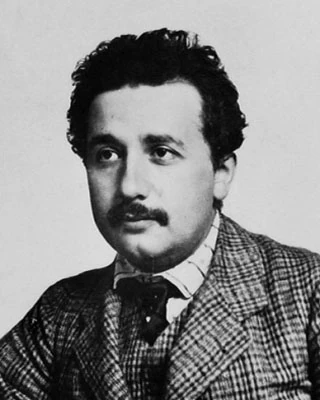
Born on March 14, 1879, in Ulm (Germany) into a non-observant Jewish family, Albert Einstein (1879-1955) showed an early interest in science. At age 12, he discovered Euclidean geometry, which he called "holy little geometry." After chaotic studies in Germany and Switzerland, he graduated in 1900 from the ETH in Zurich.
While working at the Bern Patent Office, Einstein published four groundbreaking papers in 1905:
These works upended classical Newtonian physics.
After 10 years of research, Einstein formulated his general theory of relativity in 1915, describing gravity as a curvature of spacetime. This theory was confirmed in 1919 during a solar eclipse, making Einstein a global celebrity.
A convinced pacifist, Einstein fled Nazi Germany in 1933 and settled in Princeton (USA). He worked there until his death on April 18, 1955, while advocating for civil rights and against nuclear weapons (despite his role in the Manhattan Project via his 1939 letter to Roosevelt).
Einstein left his mark on history through:
His brain, preserved after death, was studied to understand his genius.
| Theory | Date | Main Innovation | Experimental Confirmation |
|---|---|---|---|
| Special Relativity | 1905 | 4-dimensional spacetime, \(E=mc^2\) | High-speed particle experiments (CERN) |
| General Relativity | 1915 | Gravity = curvature of spacetime | 1919 eclipse, gravitational waves (LIGO, 2015) |
| Photoelectric Effect | 1905 | Quantization of light (photons) | Experiments by Robert Millikan (1868-1953) |